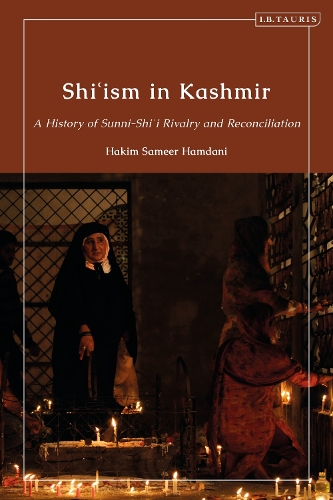
Shiism in Kashmir: A History of Sunni-Shia Rivalry and Reconciliation
(Hardback)
Available Formats
Publishing Details
Shiism in Kashmir: A History of Sunni-Shia Rivalry and Reconciliation
By (Author) Hakim Sameer Hamdani
Bloomsbury Publishing PLC
I.B. Tauris
29th December 2022
United Kingdom
Classifications
Tertiary Education
Non Fiction
Social and cultural history
297.09546
Physical Properties
Hardback
232
Width 156mm, Height 234mm
Description
When Muslim rule in Kashmir ended in 1820, Sikh and later Hindu Dogra Rulers gained power, but the country was still largely influenced by Sunni religious orthodoxy. This book traces the impact of Sunni power on Shi'i society and how this changed during the nineteenth and early twentieth centuries. The book identifies a distinctive Kashmiri Shi'i Islam established during this period. Hakim Sameer Hamdani argues that the Shi'i communitys religious and cultural identity was fostered through practices associated with the martyrdom of Imam Husayn and his family in Karbala, as well as other rituals of Islam, in particular, the construction and furore surrounding M'arak, the historic imambada (a Shi'i house for mourning of the Imam) of Kashmirs Shi'i. The book examines its destruction, the ensuing Shi'i -Sunni riot, and the reasons for the Shi'i communitys internal divisions and rifts at a time when they actually saw the strong consolidation of their identity.
Reviews
Shi'ism in Kashmir is a richly documented and immensely valuable addition to the literature on Islam in South Asia. Highlighting the historical complexity of a pivotal region, the book shows how Islamic ideas and identities form, and constantly evolve, in conjunction with political and sociocultural circumstances. The book is an indispensable resource * SHAHZAD BASHIR, BROWN UNIVERSITY, USA *
Using a rich array of unknown Persian, Kashmiri, and Urdu sources, the book covers a large temporal span to offer unique insights into the cultural, spiritual and material practices of the minority Shi i community in relation to the Sunni majority in a context of non-Muslim rule. Analytically nuanced and meticulously researched, this is a highly informative and useful corrective to the notion that sectarian differences between Shias and Sunnis are primarily due to religious differences, a view that has gained ground in recent years. The book deserves to be widely read and is a welcome addition to the burgeoning scholarship on Kashmir. * AYESHA JALAL, TUFTS UNIVERSITY, USA *
Author Bio
Hakim Sameer Hamdani is Design Director at INTACH Kashmir, Kashmir. He has published in the International Journal of Islamic Architecture amongst others and his book The Syncretic Traditions of Islamic Religious Architecture of Kashmir is forthcoming.
